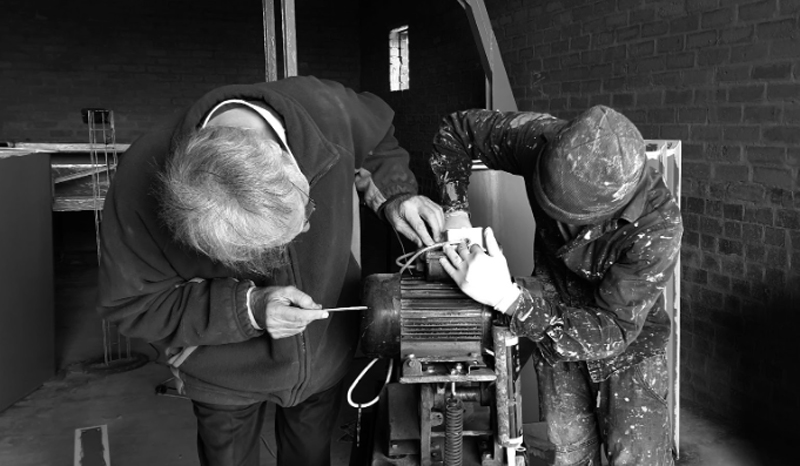
Â
Chainsaws are essential tools for homeowners, landscapers, and woodworkers. However, even the best chainsaws can face issues that prevent them from working properly. Understanding these common problems can help you get your chainsaw back in action quickly. In this guide, we'll cover the most frequent issues and how to fix them. We’ll also share where to find quality chainsaw parts and accessories.
After learning these tips, you'll be able to keep your chainsaw running smoothly and efficiently, allowing you to complete your tasks with confidence.
Let’s dive into the most common chainsaw problems and their solutions!
Â
Most Common Chainsaw Problems and How to Solve Them
Â
Chain Won’t Move
Possible Causes:
- Chain tension too loose. A loose chain can prevent it from moving properly during operation. This often happens due to stretching or improper tightening.
- Chain tension too tight. If the chain is too tight, it can bind and stop moving, causing damage to the saw.
- Bar oil system clogged.A clogged bar oil system can lead to poor lubrication, which may cause the chain to seize or not move at all.
Step-by-step guide to fixing a chain that won’t move:
- Check chain tension: Lift the chain away from the bar using your finger. If it lifts more than 1/8 of an inch, it's too loose and needs tightening. If it doesn't lift at all, it's too tight and should be loosened.
- Adjust chain tension: Use the tensioning screw on your chainsaw to adjust the chain. Turn it in the direction indicated in the manual until the tension is correct.
- Clean bar oil system: Remove the bar and chain, then clean any dirt or debris from the bar oil system. Ensure the oil reservoir is clear and free of blockages.
Â
Engine Won’t Start
Possible Causes:
Dirty air filter. A dirty air filter restricts airflow, making it hard for the engine to start.
Fuel system clogged. A clogged fuel system prevents the engine from getting enough fuel to start.
Spark plug issue. A faulty spark plug can prevent the engine from igniting the fuel, making it impossible to start.
Step-by-step guide to fixing an engine that won’t start:
- Check air filter: Remove the air filter and inspect it for dirt or debris. Clean or replace it if necessary.
- Clean fuel system: Drain old fuel and replace it with fresh fuel. Clean the fuel lines and carburetor to remove any blockages.
- Replace spark plug: Remove the old spark plug and install a new one. Ensure the gap is set correctly before tightening.
Â
Chain Slipping Off
Possible Causes:
- Worn sprocket nose. Over time, wear on the sprocket nose can cause the chain to slip off.
- Dull or damaged chain. A dull or broken chain is more likely to slip off the bar during cutting.
- Loose bar nuts. Loose bar nuts can cause the bar to shift, leading to the chain slipping off.
Step-by-step guide to fixing a chain slipping off:
- Check sprocket nose: Remove the chain and inspect the sprocket nose for wear. Replace it if it's damaged.
- Sharpen or replace chain: Use a round file to sharpen the chain. Replace it if it's severely worn or damaged.
- Tighten bar nuts: Use a wrench to tighten the bar nuts evenly. This ensures the bar stays in place and the chain doesn't slip.
Â
Chain Overheating
Possible Causes:
- Dull or damaged chain. A dull or damaged chain increases friction, causing overheating.
- Chain tension too tight. If the chain is too tight, it can create excessive friction and overheat.
- Insufficient chain lubrication. Without proper lubrication, the chain can overheat due to increased friction.
Step-by-step guide to fixing a chain overheating:
- Sharpen or replace the chain: If the chain is worn out, sharpen it or replace it with a new one.
- Adjust chain tension: Loosen the bar nuts and adjust the chain tension according to the manufacturer’s instructions.
- Lubricate the chain: Apply bar and chain oil to the chain’s moving parts. Distribute the oil evenly to avoid over-lubrication.
Â
Engine Overheating:
Possible Causes:
- Dirty air filter. A dirty air filter can restrict airflow, causing the engine to overheat.
- Fuel system clogged. A clogged fuel system can prevent the engine from running efficiently, leading to overheating.
- Spark plug issue. A dirty or worn spark plug can cause the engine to run inefficiently and overheat.
Step-by-step guide to fixing an engine overheating:
- Clean air filter: Remove the air filter and wash it with soap and water. Let it dry completely before reinstalling.
- Clean fuel system: Drain the fuel tank and carburetor, then clean the fuel lines and filter. Refill with fresh fuel afterward.
- Replace spark plug: Remove the old spark plug and install a new one that matches the manufacturer’s specifications.
Â
Titanium Dioxide Anatase UsesTitanium Dioxide Anatase Uses Chart,Titanium Dioxide Anatase Uses Cookies,Titanium Dioxide Anatase Uses Data,Titanium Dioxide Anatase Uses By
Guangdong Jintai Titanium Industry Co.,ltd , https://www.pzhjintaitio2.com
